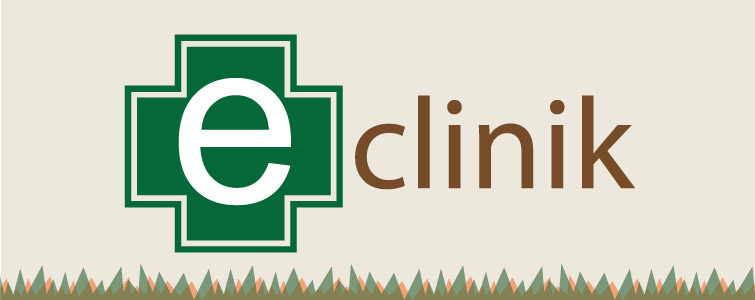Parasites/Parasitoids
Nematodes - a biocontrol agents against termites
Entomo-pathogenic nematodes (EPN) (Rhabditida: Steinernematidae and Heterorhabditidae) are insect pathogens with great potential for biological control. They can be applied, at the infective juvenile (IJ) stage, foliar applications of nematodes have been successfully used to control the caterpillar pests on various crops and have the potential for controlling various other insect pests other than lepidopterans.
In Australia, use of Heterorhabditis sp. against residual population of subterranean termite Coptotermes sp. proved better in initial stage, but could not proceed to much success due to temperature accounting 30oC near the nest centre which turned lethal for nematodes. Field experiments of elimination of diffuse nesting subterranean termite Reticulitermes flavipes was failed using two types of commercially available nematodes. In the domain of our National Fellow Project on termite control under the aegis of eco-friendly frontier technologies, administering of commercial formulation of entomopathogenic nematode was done with soil treatment, which was found not much effective.
In Sri Lanka, dampwood termite Glyptotermes dilatatus colony with several individuals in tea plantation was successfully reported to be managed with Heterorhabditis sp. and the triumph in this aspect was reported from islands of South Pacific where another genus of dampwood termite Neotermes sp. was controlled by nematodes in the unbranched trunks of coconut palms. Leaving such isolated success stories, major achievement in termite control using nematode is still waiting for its way to emerge.
NemaGel – An IARI Formulation
The NemaGel – that combines the hydrogel and EPN as bio-agent technologies contains an indigenous insect‐killer nematode Steinernema thermophilum which has been isolated by Nematology Division. This species is heat tolerant and claims to kill a broad range of soil and foliar insect pests such as diamond back moth, gram pod borer, rice borer, white fly, cabbage butterfly, cotton boll worm, tobacco caterpillar, cut worms, root grubs, desert locust, mole cricket, field cricket, rice grasshopper, red cotton bug, mustard aphid, termites, etc. infecting various crops such as cereals, pulses, oilseeds, vegetables, fruit trees, etc. It has been found to be safe for the plants, farm‐animals, non-target organisms, human health and the environment. Besides being heat tolerant, this bio-agent can effectively kill the insect pests at a wide range of soil moisture level (3‐19%). This product is licensed to M/S Multiplex Biotech International, Bangaluru.
Pusa NemaGel – Patent Application No. 2052/DEL/2011 (ICAR – IARI) It is a gel based formulation of EPN Steinernema thermophilum (Ganguly et al., 2006, 2008).
(Plz verify the IARI website - ZTMU)
Procedure of Pusa NemaGel formulation
The EPN strain used in our one study was Steinernema thermophilum, which is a locally adapted EPN strain (Ganguly and Singh, 2000). The nematodes were maintained and cultured in Nematology divisional laboratory on the 4th instar larvae of Galleria mellonella using standard procedures. Prior to its application in the field, laboratory bioassay was conducted to know the bio-efficacy of S. thermophilum against subterranean termites. EPN species S. glaseri was used as positive control, whereas a no EPN water control was used as the negative control. The nematodes of each species were inoculated @ 10 IJs / termite soldiers. The inoculated termites were then kept in BOD incubator at 25 ºC and mortality was recorded every 24 h. Both the EPN strains caused 100% termite mortality within 24-48 h. S. thermophilum was mass cultured on the 4th instar larvae of Galleria mellonella. IJs were harvested and stored at 15˚C till next use.
Interested ones can refer to the following research communications for further knowledge on this:
- Link: http://ztmbpd.iari.res.in/?q=biopesticides
- Ganguly, S. and Singh, L.K. 2000.Steinernema thermophilum sp. n. (Rhabditida: Steinernematidae) from India. International Journal of Nematology, 10:183-191.
- Ganguly, S., Anupama and Parmar, B.S. 2006. A novel bio-pesticidal formulation with improved shelf-life and the method of its preparation.Indian Patent Application No. 2218/DEL/2006.
- Ganguly, S., Anupama and Parmar, B.S. 2008. NemaGel - A formulation of the entomopathogenic nematode Steinernema thermophilum mitigating the shelf-life constraint of the tropics. Nematologia Mediterranea 36: 125-130.
Soils with NemaGel
NemaGel-soil ready for treatment
Furrows for wheat crop made for NemaGel treatment
NemaGel soils being applied in the furrows for wheat crop
Wheat seed sowing manually after NemaGel treatment
Trial with Heterorhabditis indica under National Fellow Project:
EPN, Heterorhabditis indica was cultured on final instar larvae of Galleria mellonella. Emerged infective juveniles (IJs) were harvested through the pupae of G. mellonella and pupae were buried in soil at one feet distance in the field one month prior to the wheat crop sowing. EPN was applied at the time of sowing, applied in rows along with seeds followed by irrigation. Culturing and application was done as per the standard protocols directly by the Nematologists of IARI. The formulation enhances the shelf life of the indigenous nematode Steinernema thermophilum. The nematode population can be concentrated to 1x105 infective juveniles (IJs) per gram. The EPNs carry symbiotic bacteria those are released to insect haemocoel, wherein they multiply, cause septicemia, and results in insect-mortality. In addition, the nematodes are able to recycle in the environment and safe to human, plants and other non-target organisms. The matrix hydrogel used in the formulation (Nemagel), in which the nematodes are entrapped is transparent, thus permits clear view for nematode counting. Since there is no extra coating material used, NemaGel holds up to 1,00,000 nematodes/g. Apart from entrapping EPNs, the matrix hold large amount of water and nutrients, thus serving as an added advantage.
This EPN was not found as promising one in termite control in IARI field for wheat crop in the test-year.
(Collaborative Credit: Dr Shardmohan, PS, Nematology)
Total Visit: 02014993


